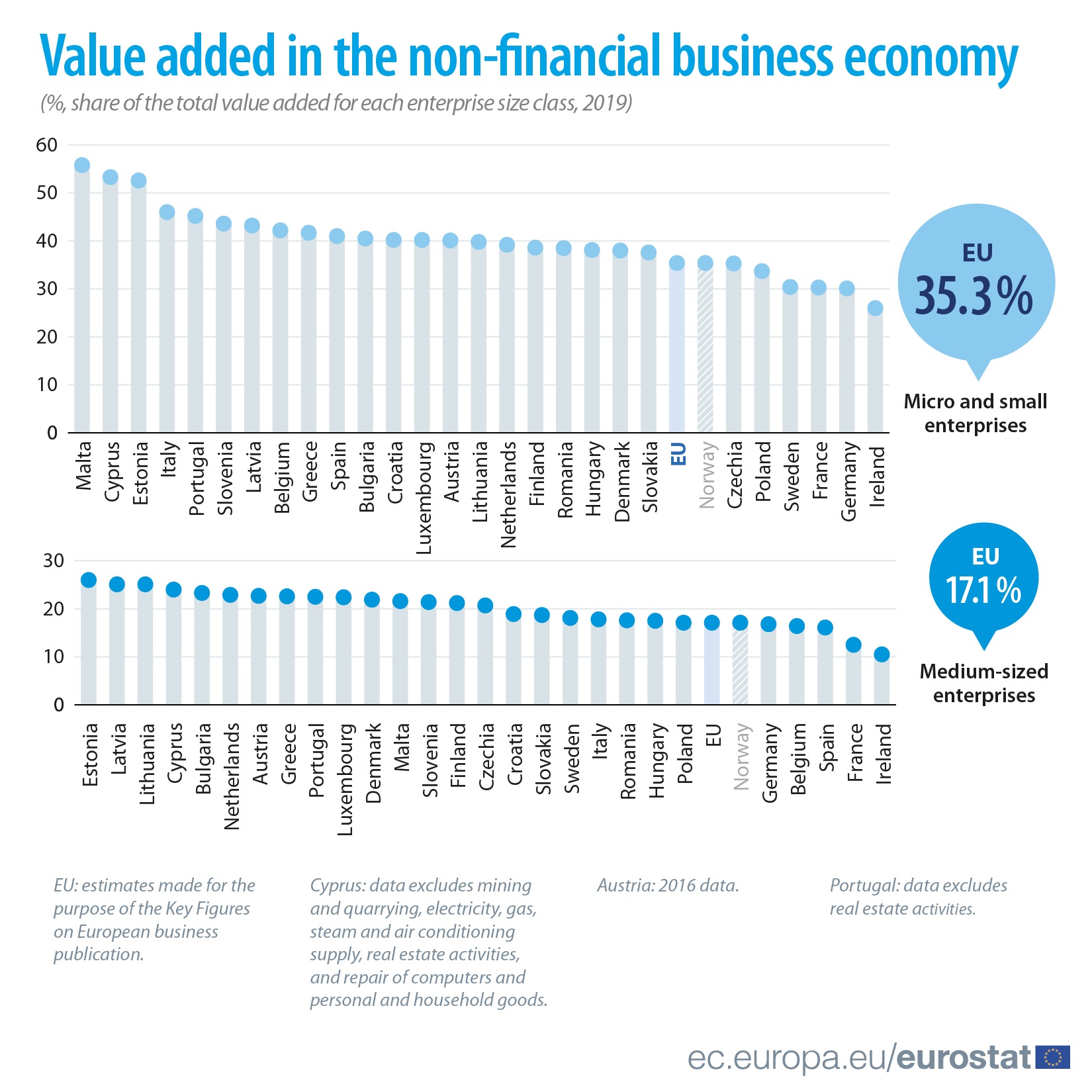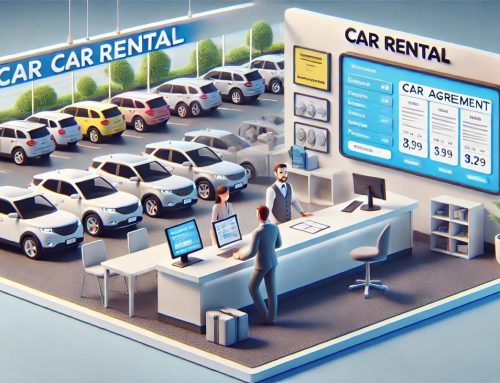June 30, 2022
Small and medium-sized enterprises (SMEs) — in other words, enterprises with fewer than 250 persons employed — are often referred to as the backbone of the European economy, providing jobs and growth opportunities. On the occasion of Micro-, Small and Medium-sized Enterprises Day, Eurostat is highlighting data on such enterprises.
In 2019, the overwhelming majority (98.9%) of EU businesses forming part of the non-financial business economy were micro or small enterprises employing fewer than 50 persons. Their economic weight was lower in terms of their contribution to employment or value added: micro and small enterprises employed just under half (48.4%) of the EU’s non-financial business economy workforce, while they contributed just over one third (35.3%) of the value added.

Meanwhile, only 0.9% of EU businesses were medium-sized enterprises with more than 50 but fewer than 250 employees. Medium-sized enterprises employed just over a sixth (16.0%) of the EU’s non-financial business economy workforce, while they contributed around the same share (17.1%) of the value added.

Among the EU Member States, micro and small enterprises contributed the highest shares of value added in the non-financial business economies of Malta (55.8% of total value added generated by micro and small enterprises), Cyprus (52.9%) and Estonia (52.6%). Meanwhile, medium-sized enterprises contributed the highest shares of value added in Estonia (26.0% of total value added generated by medium enterprises), Latvia and Lithuania (both 25.1%).
Source: Eurostat
Legal Notice: The information in this article is intended for information purposes only. It is not intended for professional information purposes specific to a person or an institution. Every institution has different requirements because of its own circumstances even though they bear a resemblance to each other. Consequently, it is your interest to consult on an expert before taking a decision based on information stated in this article and putting into practice. Neither Karen Audit nor related person or institutions are not responsible for any damages or losses that might occur in consequence of the use of the information in this article by private or formal, real or legal person and institutions.






